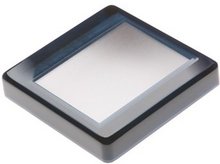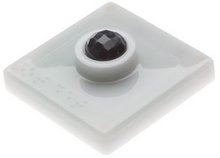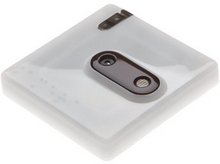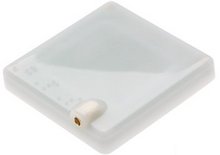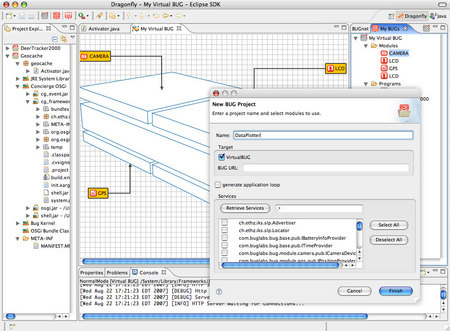Open source, Lego-like computer modules run Linux
Nov 5, 2007 — by Eric Brown — from the LinuxDevices Archive — 6 views A New York-based startup is readying a modular, open source hardware/software system resembling a set of electronic Legos. Bug Labs claims device developers can build “anything” using “Bug,” which comprises an ARM11-powered base and various modular add-ons.
A New York-based startup is readying a modular, open source hardware/software system resembling a set of electronic Legos. Bug Labs claims device developers can build “anything” using “Bug,” which comprises an ARM11-powered base and various modular add-ons.
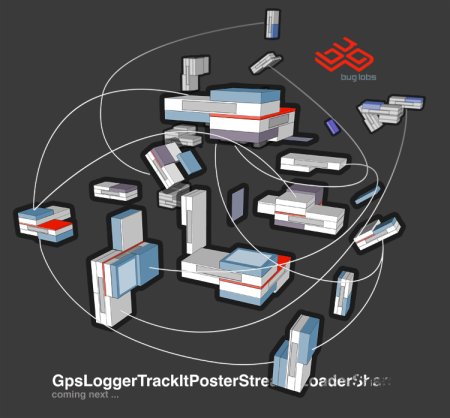
Bug Labs's Lego-like vision of “community electronics”
(Click to enlarge)
digg this story |
Boldly suggesting that “CE” could someday stand for “community electronics” instead of “consumer electronics,” Bug Labs invites hardware and software developers to contribute to the “open source” project, designing hardware and software modules of their own, and sharing their work back into the community. One suggested mix-and-match combo is a GPS/digital camera device that acts as a mobile, standalone Web service for publishing geo-tagged photos.
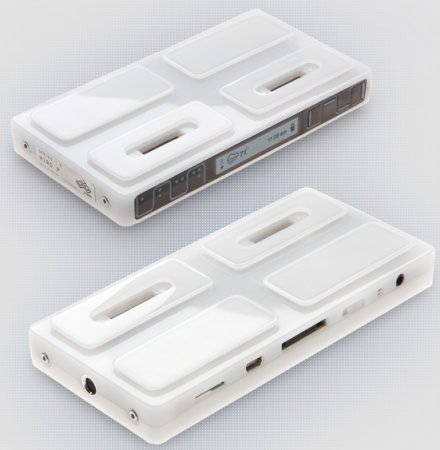
Bugbase processor module
(Click to enlarge)
The initial “BugBase” processor module (shown above) is equipped with an ARM1136JF-S CPU and 128MB of RAM. Additional features include built-in WiFi, a rechargeable battery, USB, Ethernet, and a mini LCD with button controls, the company said. The unit measures 5 x 2.5 x 0.6 inches says Bug Labs, and weighs 0.26 pounds, or “about the weight of an iPhone”. There's also a tripod mount, for the totally buggy look.
Bug-based systems consist of a processor module along with one or more expansion modules
Each BugBase can expand with up to four BugModules. By the end of the year Bug Labs hopes to ship a color LCD display, a motion detector/accelerometer, a digital camera/videocam, and a GPS locator. Modules due by Q1 2008 include a keyboard, touchscreen, and a speaker system.
First swarm of BugModules (left to right): LCD, motion detector, camera, and GPS
(Click each image to enlarge)
Bug hardware specifications listed by Bug Labs include:
- CPU — ARM1136JF-S
- RAM — 128MB Flash/DDR SDRAM
- USB — 1 x USB 2.0 HS host interface/4 hub port connections; 1 x USB OTG HS interface
- Serial links — 4 UART
- Interfaces — 4 channel SPI; I2Cm 400kbits (4 channels); I2S (2 channels); smart LCD; camera sensor; micro memory card
- Video/graphics — MPEG4 hardware encoding/decoding; hardware graphic acceleration
- Communications — 10/100 Ethernet MAC; 802.11b/g
- Size — 5 x 2.5 x 0.6 inches
- Weight — 0.26 pounds
- Power — AC or battery (up to four external)
- Other — audio out via piezo speaker, battery-backed real-time clock, smart power management, serial debug port, JTAG/ICE support
Bug software
The “Bug SDK” (software development kit) is based on Linux 2.6.19, GPL-licensed Java, and a variety of other open source packages. The BMI (bug module interface) reportedly uses a JavaME-based phone stack, while OSGi (open services gateway initiative) provides an open-source, service-oriented runtime. To put it all together, the SDK includes an Eclipse-based IDE (integrated development environment), according to Bug Labs.
The Bug SDK (Dragonfly) lets developers interact with a JavaME-based phone stack
(Click to enlarge)
Developers can work with the Bug SDK to create Bug applications as “one or more bundles,” says the company. Each BugModule launches an OSGi bundle, which creates services that can be used by other components. The Bug SDK will also plug into an upcoming collaborative development site called BugNet.
Availability
BUGbase is expected to ship by year's end. Pricing was not disclosed.
This article was originally published on LinuxDevices.com and has been donated to the open source community by QuinStreet Inc. Please visit LinuxToday.com for up-to-date news and articles about Linux and open source.

